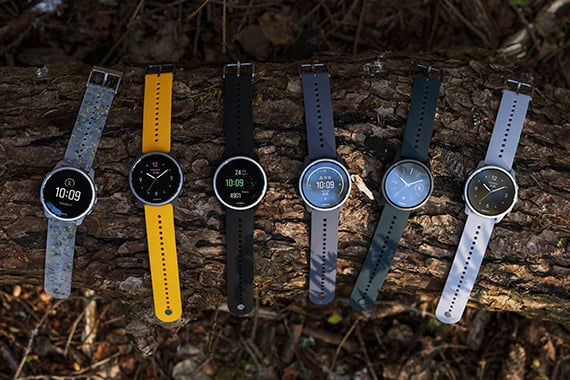Your knees ache after every run. Your shins burn by mile two. Sound familiar? Studies show 79% of runners face injuries each year—and most are completely preventable. The difference between painful miles and smooth strides often comes down to a few simple form tweaks.
Good news: You don't need a complete overhaul. This guide reveals the exact techniques that help runners go farther, faster, and injury-free.
Here's what you'll discover:
● Why proper running form prevents injuries and boosts speed
● The 80% rule that changes everything
● How the 30/30 method builds endurance
● The best tech to track your form
● 10 game-changing techniques you can apply today
Ready to run like you were born to? Let's fix that form and unlock your potential.
Part 1. Why Is Proper Running Form Important?
Bad form is like driving with the parking brake on. You're working twice as hard for half the results.
Think about it. Every step you take sends 2-3 times your body weight through your joints. That's roughly 600 pounds of force hammering your knees if you weigh 200 pounds. Multiply that by 1,000 steps per mile, and you've got a recipe for disaster.
Poor technique doesn't just hurt—it bleeds your energy. Picture a car with misaligned wheels. It burns more gas, wears out faster, and never reaches top speed. Your body works the same way.
Here's what proper form does for you:
● Cuts injury risk (according to researchers)
● Boosts running economy by 8-12%
● Reduces impact forces on joints
● Increases speed without extra effort
● Makes long runs feel shorter
The difference between elite runners and weekend warriors? It's not just fitness. Watch any marathon leader and you'll see poetry in motion—smooth, efficient, almost effortless. They've mastered the fundamentals.
Your knees shouldn't ache after every run. Your shins shouldn't scream for mercy. That burning in your calves? Not normal.
Good form turns running from punishment into freedom. It's the difference between grinding through miles and floating over pavement. When you align your body correctly, gravity becomes your friend instead of your enemy.
Part 2. What Is the 80% Rule in Running?
Forget "no pain, no gain." The 80% rule flips conventional training wisdom on its head—and science backs it up.
80% of your runs should feel easy. We're talking at a conversational pace, where you could chat with a friend without gasping for air. The remaining 20%? That's where you push hard.
Most runners get this backwards. They hammer every workout like it's race day, then wonder why they're burnt out, injured, or stuck on a performance plateau. Sound familiar?
The 80/20 breakdown looks like this:
● Easy runs (80%): Heart rate stays below 140-150 bpm
● Hard sessions (20%): Intervals, tempo runs, hill sprints
● Recovery happens during easy miles, not on rest days
● Your "easy" pace builds the aerobic engine
Elite Kenyan runners? They've used this formula for decades. Studies show that recreational runners who adopt 80/20 training improve their 10K times by an average of 23 seconds without increasing their weekly mileage.
The magic happens in your mitochondria—those cellular powerhouses that convert oxygen into energy. Easy running creates more of them. Hard running makes them stronger. You need both.
Part 3. What Is the 30/30 Method of Running?
The 30/30 method sounds too simple to work. Run hard for 30 seconds, jog easy for 30 seconds. Repeat. That's it.
But this bare-bones approach packs a serious punch. French exercise physiologist Veronique Billat discovered that these micro-intervals trigger the same adaptations as longer, more painful workouts—without the suffering.

Here's why 30/30s work:
● Short bursts prevent lactic acid buildup
● You maintain higher speeds than traditional intervals
● Recovery stays active, not static
● Total time at VO2 max increases by 83%
● Less mental fatigue than grinding through 5-minute repeats
The beauty? You never redline long enough to hate life. Each 30-second push feels manageable, even when you're 10 rounds deep.
Start with 8-10 rounds after a proper warmup. Advanced runners can stack 15-20 rounds for a killer session. The key is keeping your hard efforts at 5K race pace—fast but controlled.
Sample 30/30 workout:
1. 10-minute easy warmup
2. 12 x (30 seconds hard/30 seconds easy)
3. 10-minute cooldown
Studies show runners using 30/30s twice weekly improved their 3K times by 6% in just four weeks. That's shaving a full minute off a 20-minute 5K.
The 30/30 method proves that effective training doesn't require complicated spreadsheets or soul-crushing workouts. Sometimes the simplest solutions deliver the biggest results.
Part 4. The Best Watch to Track and Improve Your Running Form Efficiently
You can't fix what you can't measure. While mirrors and smartphone videos work, they miss the critical moments—like when your form crumbles at mile 10. That's where real-time data becomes your ultimate gadget.
Smart watches capture what your eyes can't: cadence drops, ground contact time spikes, and efficiency losses exactly when they happen. They're like having a coach on your wrist, alerting you to form breakdowns before they become injuries.
That's exactly what the Suunto Run, a featherweight powerhouse built specifically for runners who want data without the bulk, will do for you.

Why Suunto Run stands out:
- 36 grams—lighter than your car keys (most running watches weigh 50-70g and feel like ankle weights on your wrist)
- Dual-band GPS tracks pace within inches—no more "GPS drift" ruining your splits
- 20-hour battery during training beats competitors that die mid-marathon (12 days daily use means weekly charging, not nightly)
- Ghost Runner feature lets you race your PR—real-time feedback shows if you're ahead or behind your best
- Built-in interval timers perfectly sync with 30/30 workouts—no fumbling with buttons mid-sprint
The magic happens post-run. Suunto's app breaks down your cadence, ground contact time, and vertical oscillation—the holy trinity of running form metrics. See exactly when your form breaks down and which muscles need strengthening.
At $249, it costs less than two months of physical therapy. Plus, we're throwing in a free strap (normally $49) for a limited time. Don't hesitate to check it now!
Part 5. 10 Proper Running Techniques You Must Know
Time to transform your run from a struggle to a flow state. These 10 techniques separate smooth runners from the crowd limping home.
1. Land Under Your Hips, Not Ahead
Overstriding is the #1 rookie mistake. Your foot should kiss the ground directly beneath your center of mass. This cuts braking forces and protects your knees.
How to nail it:
· Count steps for 30 seconds, double it (aim for 170-180)
· Think hot coals—quick, light touches
· Focus on lifting feet up, not reaching forward
· Use a metronome app at 175 bpm
2. Run Tall Like You're Being Pulled by a String
Slouching crushes your lungs. Good posture adds more oxygen to every breath.
Master the position:
· Stand against the wall—head, shoulders, butt touch
· Pull shoulder blades down and back
· Lift from sternum, not chin
· Keep your head stacked over your shoulders
3. Breathe From Your Belly, Not Your Chest
Deep belly breathing delivers more oxygen per breath than shallow chest breathing.
Breathing basics:
· Place hand on belly—it should rise, not chest
· Use a 3:2 pattern (inhale 3 steps, exhale 2)
· If you can't speak full sentences, slow down
4. Keep Your Arms at 90 Degrees
Proper arm swing improves running economy. No T-Rex arms or windmills allowed.
Arm checklist:
· Elbows bent 85-95 degrees
· Hands swing from the hip to the lower chest
· Drive elbows backward
· Never cross the centerline
5. Engage Your Core Without Tensing
Proper core engagement reduces energy use. Think firm, not rigid.
Find balance:
· Pull belly button gently toward spine (30% effort)
· Maintain normal breathing
· You should be able to laugh while running
6. Strike With Your Midfoot
Midfoot striking reduces impact forces compared to heavy heel striking.
Transition safely:
· Land with the whole foot simultaneously
· Start with 5-minute intervals
· Think "jumping rope" feeling
· Increase gradually weekly

7. Lean From Your Ankles, Not Your Waist
A 5-7° forward lean adds speed with zero extra effort.
Get it right:
· Keep your body straight, fall forward from the ankles
· Lead with hips, not head
· If your butt sticks out, you're bending wrong
8. Relax Your Face and Hands
Tension wastes 2% of total energy. Stay loose to run longer.
Stay relaxed:
· Touch the thumb to the middle finger lightly
· Smile slightly (really)
· Drop shoulders every mile
· Wiggle fingers periodically
9. Push the Ground Behind You
An active push-off adds more propulsion than just lifting feet.
Power moves:
· Think "drive", not "lift."
· Engage glutes at push-off
· Feel the ground moving backward
· Focus on strong toe-off
10. Match Your Breathing to Your Cadence
Rhythmic breathers run longer at the same effort.
Build rhythm:
· 3:2 for easy runs (inhale 3, exhale 2)
· 2:1 for hard efforts
· Always exhale on alternating feet
· Practice during warmup
Ready to Transform Your Running Journey with Proper Running Technique?
Every runner starts somewhere. Whether you're chasing your first mile or your fastest marathon, these techniques turn painful slogs into effortless strides. Small adjustments create massive results.

Proper running technique isn't about perfection—it's about progress. When your form clicks, running stops feeling like punishment and becomes pure freedom. Your body knows how to run efficiently; these techniques just unlock what's already there.



















































































